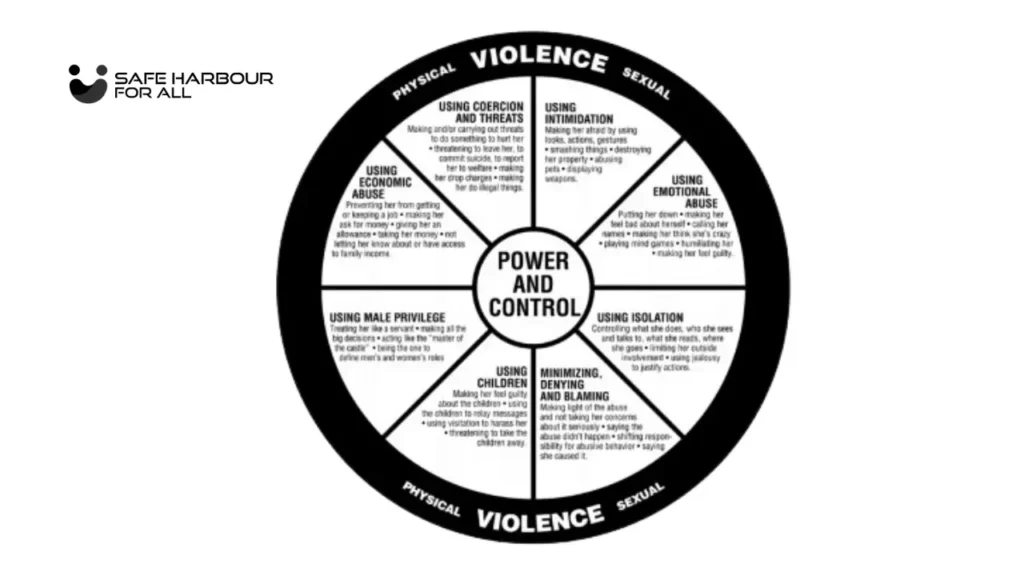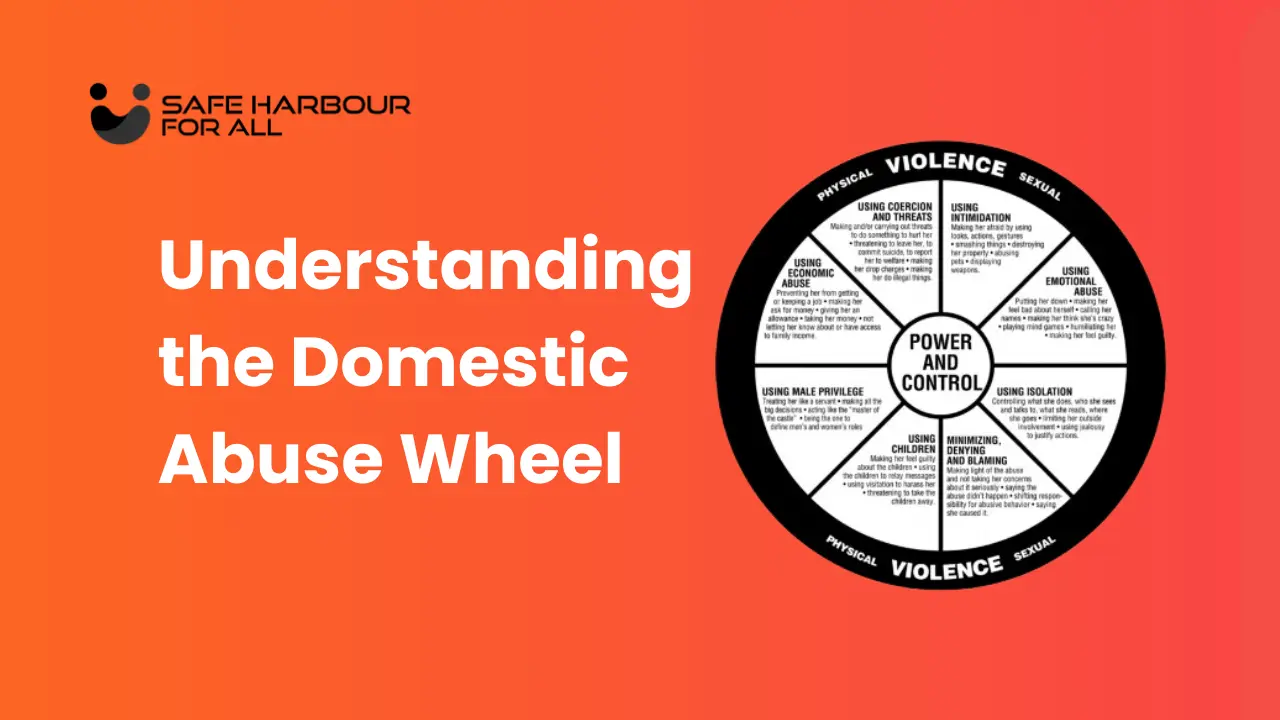Domestic abuse, often referred to as domestic violence or intimate partner violence, is a pervasive issue that affects individuals and families across the globe. To understand the intricacies of abuse within intimate relationships, experts and advocates have developed tools and models to shed light on its various dimensions.
One such tool is the “Domestic Abuse Wheel,” a visual representation that illustrates the multifaceted nature of domestic abuse. In this article, we will delve into the Domestic Abuse Wheel, explaining its components, significance, and how it helps us comprehend the complex web of abuse.
Understanding the Domestic Abuse Wheel

The Domestic Abuse Wheel, also known as the Power and Control Wheel, was originally created by the Domestic Abuse Intervention Project in Duluth, Minnesota, in the early 1980s. This tool was developed to help professionals, survivors, and the general public recognize and comprehend the different forms and tactics of abuse that can occur within an abusive relationship.
It serves as an educational resource and a guide for identifying the patterns of control and manipulation employed by abusers. The wheel is typically divided into several sections, each representing a specific type or aspect of abuse. These sections include:
1. Physical Abuse
The Physical Abuse section includes acts of violence such as hitting, slapping, punching, choking, and any form of physical harm. It represents the visible and tangible aspects of abuse and serves as a stark reminder of the immediate danger victims may face.
2. Emotional Abuse
Emotional abuse involves tactics aimed at controlling or manipulating a person’s emotions, self-esteem, and mental well-being. This can include constant criticism, humiliation, gaslighting (making the victim doubt their own reality), and threats. Emotional abuse often leaves deep emotional scars that may take longer to heal than physical injuries.
3. Verbal Abuse
Verbal abuse encompasses the use of harsh and hurtful words, shouting, name-calling, and insults to demean and control the victim emotionally. The scars of verbal abuse can linger, affecting a person’s self-worth and self-confidence.
4. Sexual Abuse
The Sexual Abuse section represents any form of non-consensual sexual activity, including rape, sexual harassment, or coerced sexual acts. Sexual abuse involves intimidation and violence to gain sexual compliance, leaving victims traumatized physically and emotionally.
5. Financial Abuse
Financial abuse includes controlling or exploiting a person’s financial resources, such as restricting access to money, forcing the victim to sign over assets, or running up debt in the victim’s name. Financial abuse can leave victims financially dependent and unable to escape the abusive relationship.
6. Isolation
Isolation tactics are used to cut the victim off from their support networks, including friends and family. Abusers may monitor and control communication or manipulate the victim into staying isolated. Isolation can leave victims feeling trapped and powerless.
7. Threats and Intimidation
This section represents the use of threats to create fear and control the victim. Threats can be physical, emotional, or psychological and are often used to maintain power and control over the victim’s actions and decisions.
8. Children and Family
Abusers may use children as a tool of abuse, such as threats to harm the children or using visitation or custody as leverage against the victim. This aspect highlights how children can become collateral victims of domestic abuse.
9. Minimizing, Denying, and Blaming
Abusers often minimize their actions, deny their abusive behavior, or shift the blame onto the victim. This tactic can confuse and manipulate the victim, making them doubt their own experiences and the severity of the abuse.
10. Using Male Privilege
In heterosexual relationships, this section highlights how some abusers may use societal gender norms and male privilege to exert control over the victim. They may justify their abusive behavior by asserting dominance based on gender.
11. Using Social, Economic, or Educational Privilege
Abusers may use their social, economic, or educational status to maintain control and power over the victim. This form of abuse underscores how privilege can be exploited within an intimate relationship.
Also Read This: What Happens When You Report Domestic Abuse To The Police
Significance of the Domestic Abuse Wheel
The Domestic Abuse Wheel serves multiple critical purposes:
1. Raising Awareness
By visually representing the various forms and tactics of abuse, the wheel raises awareness about the complexity of domestic abuse. It helps survivors and advocates recognize and name the abuse they may be experiencing or witnessing.
2. Education and Training
Professionals, including law enforcement officers, counselors, and healthcare providers, use the Domestic Abuse Wheel as a training tool to better understand the dynamics of domestic abuse. This knowledge enables them to provide more effective support and assistance to survivors.
3. Validation for Survivors
For survivors of domestic abuse, seeing the wheel can be a validating experience. It helps them understand that what they are going through is a recognized pattern of abuse, reducing self-blame and isolation.
4. Advocacy and Policy
The wheel has been instrumental in advocating for policy changes and legal reforms related to domestic violence. It underscores the need for comprehensive laws and support services for survivors.
5. Prevention
By comprehending the nuances of abuse, communities and organizations can work toward prevention initiatives that address not only the physical aspects of abuse but also its underlying causes and patterns.
Conclusion
The Domestic Abuse Wheel is a powerful tool that unveils the intricate web of abuse within intimate relationships. It shines a light on the various tactics and forms of abuse used by perpetrators to gain and maintain control over their victims. Understanding this complexity is essential for raising awareness, providing support, and ultimately working toward the prevention.
Also Read: What is Domestic Abuse: Understanding the Silent Epidemic

